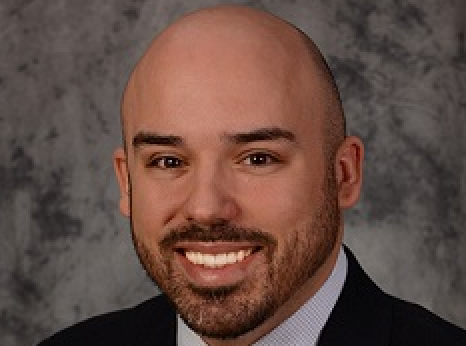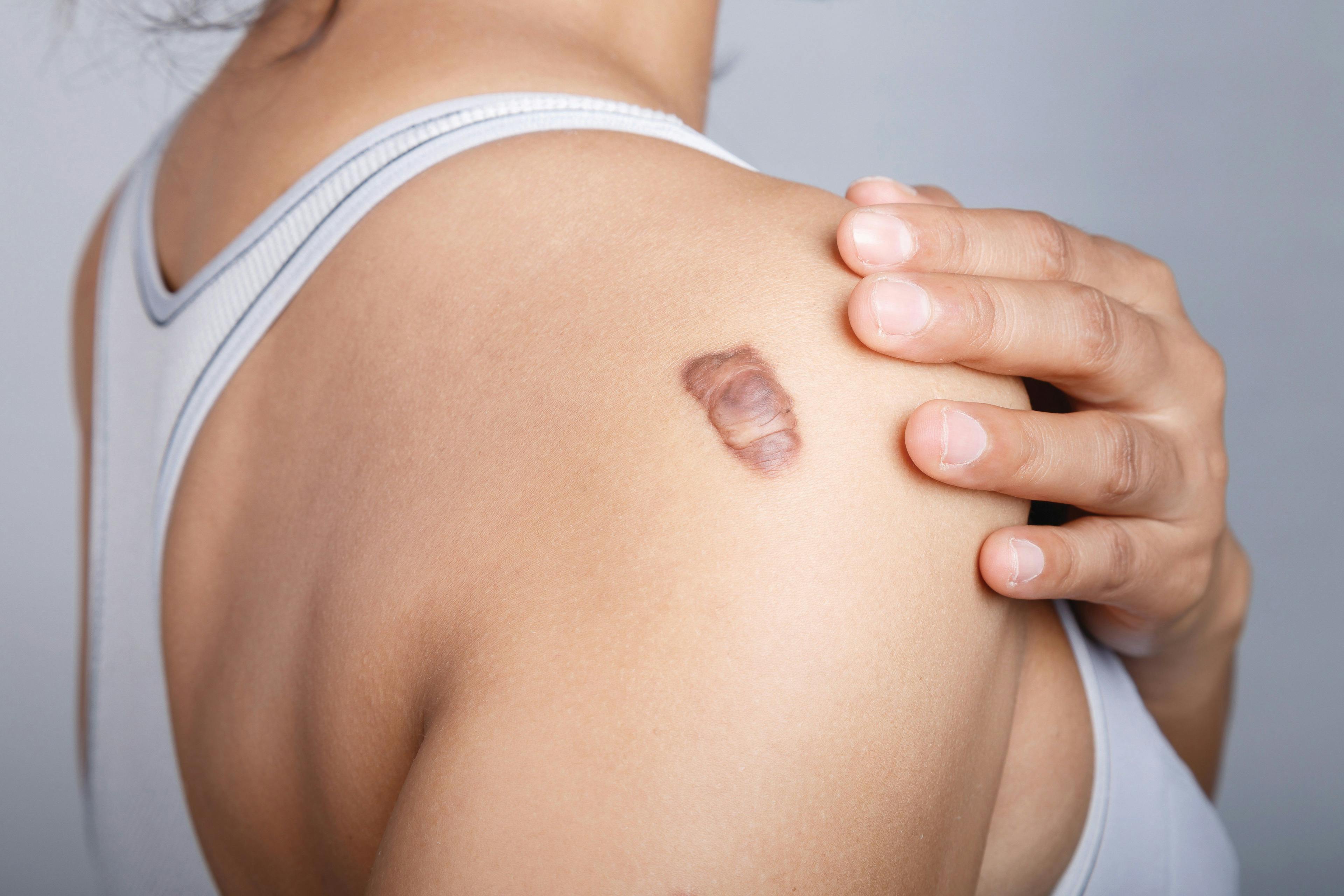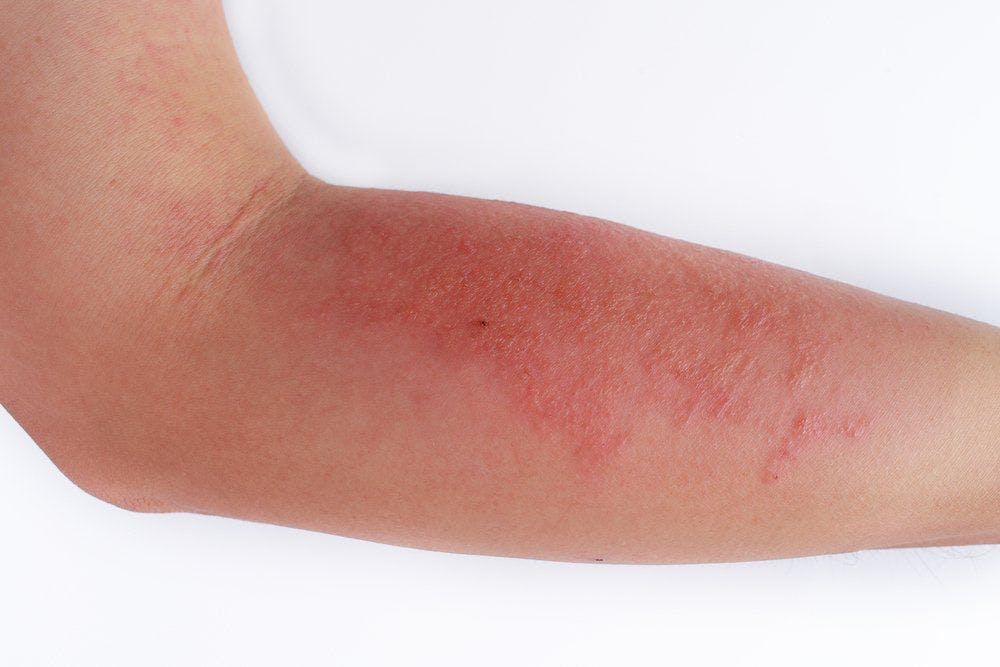- Acne
- Actinic Keratosis
- Aesthetics
- Alopecia
- Atopic Dermatitis
- Buy-and-Bill
- COVID-19
- Case-Based Roundtable
- Chronic Hand Eczema
- Chronic Spontaneous Urticaria
- Drug Watch
- Eczema
- General Dermatology
- Hidradenitis Suppurativa
- Melasma
- NP and PA
- Pediatric Dermatology
- Pigmentary Disorders
- Practice Management
- Precision Medicine and Biologics
- Prurigo Nodularis
- Psoriasis
- Psoriatic Arthritis
- Rare Disease
- Rosacea
- Skin Cancer
- Vitiligo
- Wound Care
Publication
Article
Dermatology Times
Adjunctive platelet-rich plasma may improve acne scars
Author(s):
Platelet-rich plasma (PRP) shows promise as an adjunctive treatment for atrophic acne scarring, but experts say more research is needed.
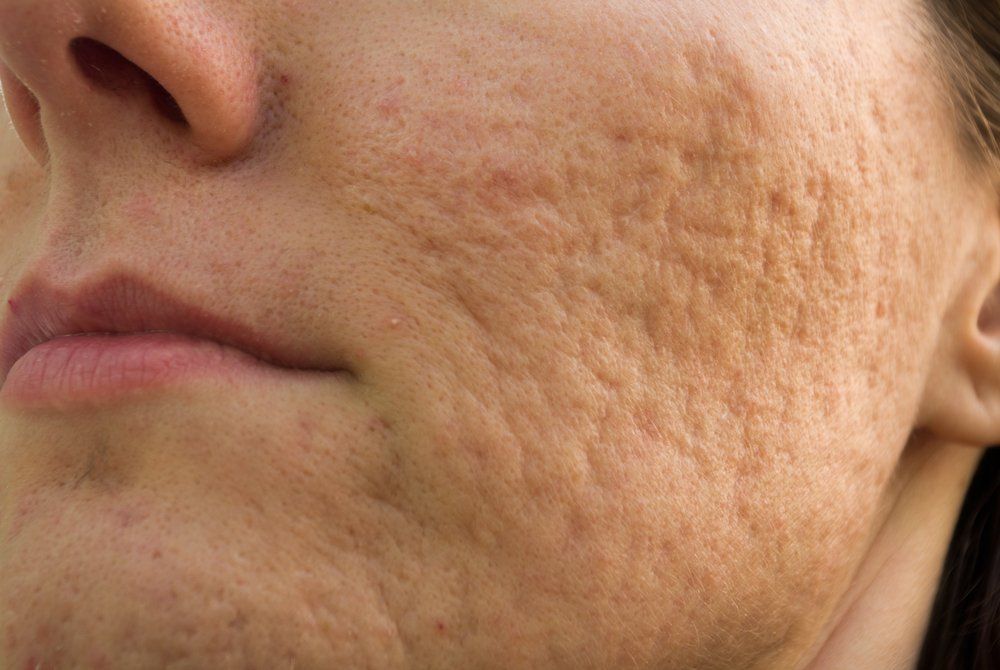
Platelet-rich plasma (PRP) shows promise as an adjunctive treatment for atrophic acne scarring, according to recent research. However, experts say that with all PRP combinations used in acne scarring, treatment regimens, research protocols and clinical results remain highly variable.
RELATED: Studies support microneedling efficacy for acne scarring
Lack of standardization has hindered dermatologists’ assessments of adjunctive PRP and platelet-rich products as a whole, says Michael Hesseler, M.D., founder of Arch Dermatology Institute in St. Louis, Mo.
“It’s been diffcult to interpret the literature that’s available because of this lack of standardization,” he notes.
Many studies show that adding PRP to other modalities used to treat acne scars can be helpful. A meta-analysis of seven studies that was published online in Aesthetic Plastic Surgery showed that adding PRP to fractional laser treatment, microneedling or dermabrasion often provides significantly better improvement in acne scars.1 Due to the small number of studies that met inclusion criteria, however, these authors could draw no conclusions about specific combinations.
Conversely, a review by Hesseler et al. concluded that adding PRP to fractionally ablative CO2 laser improves acne scars, patient satisfaction and postprocedural symptoms.2 However, results regarding PRP with microneedling were mixed, and significant between-study heterogeneity precluded further analysis of microneedling or laser combinations. The review appeared online in the Journal of the American Academy of Dermatology.
“The literature regarding adjunctive PRP with laser for acne scarring is better compared to PRP with microneedling,” Dr. Hesseler says. “That’s not to say that PRP is ineffective with microneedling. But we’re seeing mixed results in the setting of a relatively lower quality of evidence.”
RELATED: Aggressive, early treatment may prevent acne scars
STUDY DESIGNS
While laser-PRP studies used fairly consistent PRP types and regimens, says study co-author Nikhil Shyam, M.D., the variability of microneedling study designs made it much more diffcult to draw meaningful conclusions from them. He is a New York-based dermatologist in private practice.
Microneedling-PRP studies reviewed by Drs. Hesseler and Shyam included topical and intradermal application, although most of these evaluated adjunctive topical PRP.
“Again,” Dr. Hesseler says, “this comes back to not having a consensus in regard to processing or delivering the PRP, and there are many different researchers testing this independently from one another.”
Nevertheless, Dr. Hesseler says, the dermatology community is beginning to organize its thoughts further about platelet-rich products - how to use them and for what dermatologic conditions they appear effective. For example, five of the seven laser studies he and Dr. Shyam reviewed used leukocyte-rich PRP (L-PRP). Unlike pure or leukocyte-poor PRP, L-PRP involves including the buffy coat of leukocytes and higher-density platelets that settle above the layer of red blood cells after centrifugation.
The physiology behind platelet-rich products makes sense, Dr. Hesseler says.
“Platelets are the first cells that show up in our wound-healing cascade. So, what we’re really doing is harnessing the body’s own wound-healing machinery and kickstarting that process with PRP,” he explains.
RELATED: Personalizing skincare with PRP
However, Emil Tanghetti, M.D., questions the longevity of that kickstart. He is director of the Center for Dermatology and Laser Surgery in Sacramento, Calif.
“Think of the pathophysiology. You’re putting a platelet-derived growth factor on the skin after performing a procedure,” he says. However, he says, it’s unclear if PRP works without some sort of access channels, or how long growth factors last once applied.
“The laser seems to work a little better - that’s the suggestion from the data. The problem is, most of my patients don’t want aggressive fractional ablative laser treatments,” Dr. Tanghetti says. “There’s too much downtime.”
Instead, he typically uses fractional radiofrequency (RF) microneedling for acne scars, followed by a secondary therapy to enhance effcacy with relatively minimal downtime.
“For some of our darker-skinned patients, we sometimes use picosecond technology, or fractional nonablative technology, in particular the thulium laser. Or we can add to the RF microneedling with a very super cial CO2 fractional laser with low energies. We have a unit (SmartXide Tetra, DEKA) that gives a high peak-power pulse, so it creates a thulium-like injury.”
RELATED: Can PRP improve melasma?
Dr. Hesseler says, “We’re still learning a lot about PRP and other platelet-rich products. The real value of this treatment option is that it’s been shown to be beneficial, yet also quite safe.” With adjunctive PRP for acne scarring, he says, several studies reflect not only better acne scar improvements, but also less postprocedural symptoms and higher patient satisfaction.
Dr. Tanghetti counters that good postprocedural wound care might work at least as well as PRP in reducing downtime. Without knowing all the nuances of whether and how researchers optimized wound care in each study, he says, he doubts the efficacy of PRP in this regard.
One day, say Drs. Hesseler and Shyam, dermatologists may use adjunctive PRP in additional treatment combinations and for additional therapeutic targets. If there were more of a consensus regarding PRP terminology and techniques, says Dr. Hesseler, “then platelet-rich products would certainly be investigated with other procedures as well.”
All sources agree that more research is needed. Recently, Huang et al. performed a meta-analysis of 11 acne-scarring studies involving PRP, including eight studies analyzed by Hesseler et al. The meta-analysis showed that in aggregate, the risk ratio (RR) of achieving at least 50% improvement with adjunctive PRP was 1.93 (microneedling: 3.6; CO2 laser: 1.3), and the RR of achieving at least 75% improvement was 3.21 (microneedling: 3.9; CO2 laser 3.3).3
Based on the meta-analysis and Hesseler et al., meta-analysis lead author Yu-Chen Huang, M.D., says she believes adjunctive PRP is a good choice for acne scarring, although the ideal PRP regimen and combination needs further clarification. Dermatologists in Asia generally believe that PRP promotes cell differentiation, proliferation and regenerationand enhances wound recovery, adds Dr. Huang. She is assistant professor of dermatology at Taipei Medical University, Taipei, Taiwan.
RELATED: Risk of scarring in adults with persistent acne
Dr. Hesseler says that because people have begun noticing what PRP can do for acne scars, he foresees further research with other techniques such as subcision. Dermatologists use many of these same procedures for hypertrophic scars, he says, and these procedures also may show augmented benefits with PRP.
“Although most of literature has looked at atrophic scars,” adds Dr. Hesseler, “it would be interesting to see additional research focused on other types of acne scars, as well as other types of scars altogether.”
He also believes there is still value in combining PRP with microneedling or other minimally invasive procedures for acne scarring.
“This still has to be investigated further,” Dr. Hesseler says.
Dr. Shyam says that although microneedling has been around awhile, its popularity for acne scarring has grown recently. Accordingly, he foresees that increasing numbers of microneedling-PRP studies with larger sample sizes and more detailed descriptions of PRP processing will be published.
RELATED: Why does acne leave a scar?
Dr. Tanghetti says, “I’d love to see more data, but good luck getting it.” In the rush to capitalize on the latest “in” treatment, he says, research often lags behind.
“And as with all fads, if it’s real, it will survive. If not, it will die,” he says.
Disclosures:
Drs. Hesseler, Shyam and Huang report no relevant financial interests.
Dr. Tanghetti is a consultant for Cynosure, DEKA, Quanta, Cartessa and Aesthetics Biomedical but owns no stock in these companies.
References:
1. Hsieh TS, Chiu WK, Yang TF, Wang HJ, Chen C. A meta-analysis of the evidence for assisted therapy with platelet-rich plasma for atrophic acne scars. Aesthetic Plast Surg. 2019 Sep 10. doi: 10.1007/s00266-019-01471-w. [Epub ahead of print]
2. Hesseler MJ, Shyam N. Platelet-richplasma and its utility in the treatment of acne scars: a systematic review. J Am Acad Dermatol.2019;80:1730-1745.
3. HuangIH, Huang YC. Comment on “Platelet-rich plasmaand its utility in the treatment of acne scars: a systematic review.” J Am Acad Dermatol. 2019 Sep 19. pii: S0190-9622(19)32761-6. doi: 10.1016/j.jaad.2019.09.024. [Epub ahead of print]
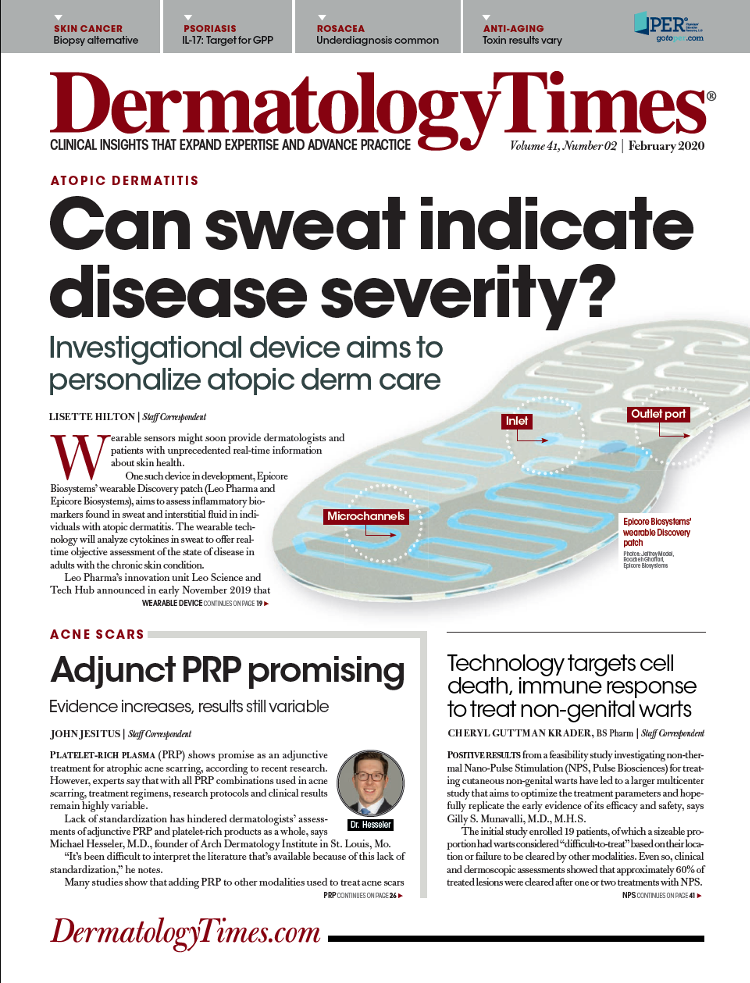
Newsletter
Like what you’re reading? Subscribe to Dermatology Times for weekly updates on therapies, innovations, and real-world practice tips.

